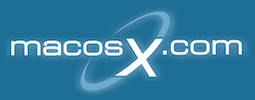videoflyer
Registered
Specifically, I'm considering a freelance design gig for which the client supplies an external firewire drive with a) a bootable system, b) a more recent version of the Adobe Suite than I own (necessary - his files are all in the more recent version), c) all of the project files, and d) Suitcase and all of the tons of different fonts required. The gig is uninspiring - a coupon catalog - but each of his many clients gets to supply either their own print-ready PDF or copy/photos/fonts for him/me to layout...the result being there's a ton of fonts.
So in other words, it's a preconfigured system to simplify different people working on the same files. Not at the same time, obviously, but the idea being that a new person can simply boot up from this drive and go right to work. I've scanned the drive with VirusBarrier and found nothing wrong with it. And I don't see any suspicious programs in the Applications folder. And I don't have any reason to suspect that that this guy would do anything underhanded...but I'm understandably (I think) nervous.
Is there a way to protect my internal drive/files when I boot from an external drive? It would give me peace of mind if there were steps I could take that would allow me to boot from his drive without worrying about the possibility that there MIGHT be a program or script or something that might muck about with my computer.
How can I protect myself?
So in other words, it's a preconfigured system to simplify different people working on the same files. Not at the same time, obviously, but the idea being that a new person can simply boot up from this drive and go right to work. I've scanned the drive with VirusBarrier and found nothing wrong with it. And I don't see any suspicious programs in the Applications folder. And I don't have any reason to suspect that that this guy would do anything underhanded...but I'm understandably (I think) nervous.
Is there a way to protect my internal drive/files when I boot from an external drive? It would give me peace of mind if there were steps I could take that would allow me to boot from his drive without worrying about the possibility that there MIGHT be a program or script or something that might muck about with my computer.
How can I protect myself?


